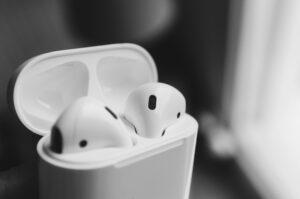
Hot Topics
This Bud’s For You
May 29, 2025
 We’re now four surveys into the new reality of the three-minute qualifier in PPM markets, and one thing is clear: radio has benefited from this new reporting procedure. If you’re a faithful follower of this missive, you know we compared Q1 2024 with Q1 2025 and found that, across several demos, all the major dayparts, and the most common formats, AQH is up in double digits. (If you haven’t seen those comparisons, the links are below.)
We’re now four surveys into the new reality of the three-minute qualifier in PPM markets, and one thing is clear: radio has benefited from this new reporting procedure. If you’re a faithful follower of this missive, you know we compared Q1 2024 with Q1 2025 and found that, across several demos, all the major dayparts, and the most common formats, AQH is up in double digits. (If you haven’t seen those comparisons, the links are below.)
So, what’s next? What can Nielsen do to provide an even more accurate account of radio listening?
The answer is simple: do a better job of crediting digital listening occasions and durations. As it stands, the only way you can get credit for your stream in a PPM market is if a meter captures that listening. There’s one small problem with this—most of that listening occurs via earbuds. Unfortunately, the meter cannot “hear” the encoded broadcast in that scenario.
Sure, some listening does occur via smart speakers—especially at home—but most stream listening goes uncaptured. If you’re a programmer, it’s frustrating to see your real-time server-side data dwarf what Nielsen reports.
We know from studies like Edison’s “Share of Ear” that listening to radio station streams is on the rise. Every radio station in America aggressively promotes its stream and/or app. We’re driving our content to the platforms where listeners are, yet we may not be sufficiently rewarded for those efforts.
Nielsen’s current “solution” is the “headphone adjustment.” Approximately every 18 months, Nielsen has conducted studies that enable them to apply an “adjustment” to the AQH for streams that are detected by a PPM. How large is this adjustment? You’ll need to consult your Nielsen rep. Suffice it to say, the percentage increases are significant and vary by demo. The process, however, remains a bit mysterious.
While this is a valiant effort to capture more listening, it likely falls short of reality. (OK, insert your own snarky reality joke here.)
The big problem with this system is that the adjustment is only applied to your streaming audience that is detected by a meter. That’s like fishing for marlin with a Zebco reel.
There are ongoing efforts to improve the reporting of streamed audiences, including appending demographic information to those listeners. One thing is certain: while the three-minute rule has picked up real but previously unreported listening, there likely remains a plethora of streamed AQH sitting on the cutting room floor.
We don’t have the solution, but we believe the industry needs to be more forceful in demanding one.
Here are the quarterly comparisons based on demo and daypart.
This one features demos and formats.
-Steve Allan, Programming Research Consultant
Comments